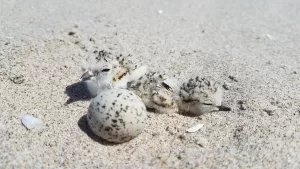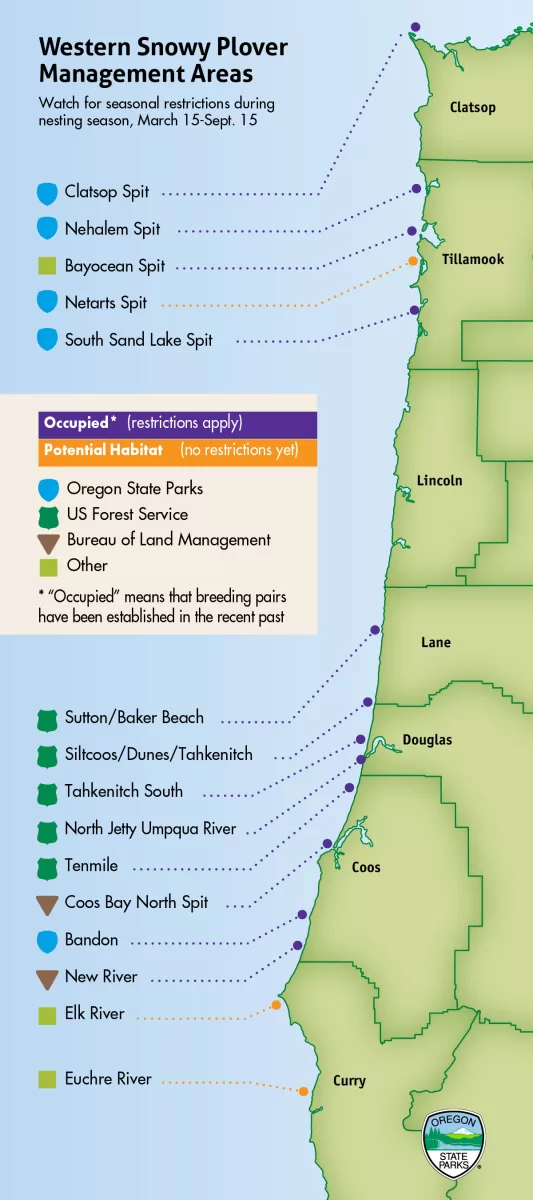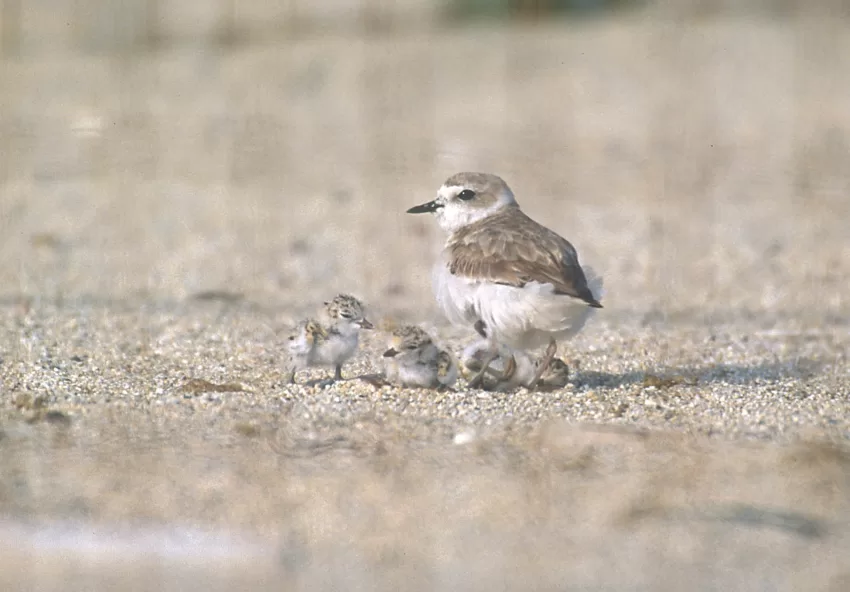OREGON COAST, OR – The Oregon Parks and Recreation Department and Siuslaw National Forest remind visitors that it is plover nesting season on the Oregon coast March 15 to Sept. 15 — visitors can help recovery efforts for the threatened western snowy plover by observing recreation restrictions in designated plover areas.
Sensitive plover nesting areas will be roped off or identified by signs with rules and limits, such as staying on the wet sand, to help protect the small shorebirds and their exposed nests during this crucial period. Recreation restrictions occur in designated plover management areas: stretches of beach along the coastline where plovers nest or might nest. These areas combined make up about 40 miles of Oregon’s 362 miles of shoreline.
Seasonal recreation restrictions have helped protect these small birds that nest on open sand. Nests, and especially chicks, are well-camouflaged. During the nesting season, human disturbances can flush adult plovers away from their nests as they attempt to defend their young. Left alone too long, or too often, eggs or chicks can die from exposure, predators or people.
Reminders for recreation on designated plover beaches March 15-Sept. 15:
- The following are not permitted: dogs (even on a leash), driving a vehicle, riding a bicycle, camping, burning wood, flying kites or operating drones.
- Foot and equestrian traffic is permitted below the high-tide line on wet, packed sand.
- Respect signs and barriers to protect nesting habitat.
“We’re making great strides in reversing the decline of this species,” said Cindy Burns, Siuslaw National Forest wildlife biologist. “But it takes all of us, so we urge people to do their part to understand nesting season rules and to share the beach this spring and summer.”
 The U.S. Fish and Wildlife Service listed western snowy plovers as a threatened species in 1993, when officials counted only 45 breeding adults. The numbers of breeding adults have steadily increased since then due to ongoing efforts. Officials counted 433 during the breeding season survey in 2023.
The U.S. Fish and Wildlife Service listed western snowy plovers as a threatened species in 1993, when officials counted only 45 breeding adults. The numbers of breeding adults have steadily increased since then due to ongoing efforts. Officials counted 433 during the breeding season survey in 2023.
“We appreciate visitors’ support in keeping these shorebirds safe in the combined 40 miles of protected area along the coast. We invite visitors to enjoy permitted recreation in those areas or to recreate without seasonal restrictions on the hundreds of miles of beaches not designated as plover nesting areas,” said Laurel Hillmann, ocean shore specialist for Oregon Parks and Recreation Department.

More information on the snowy plover, including detailed maps of nesting sites, can be found on the Oregon State Parks website (oregon.gov/plovers) and on the Siuslaw National Forest website (https://t.ly/AKPAN). Visitors to the Oregon Dunes National Recreation Area can review Off-highway Vehicle (OHV) maps at its website to identify unrestricted recreation areas and information on riding motor vehicles on the sand.
New plover activity
The increase in plover numbers may result in nesting occurring in new or historical nesting sites. For example, visitors to Sand Lake Recreation Area may see small roped off areas near the lake’s inlet to protect active nests, and may encounter plovers on the beach. Beachgoers are encouraged to protect these birds by restricting recreation activities to wet sand areas, avoiding roped off nesting areas, packing all trash out and keeping dogs on leash.
Background on plover protections
Several land managers oversee beach activity for plover protection, primarily the U.S. Forest Service (USFS), the Bureau of Land Management (BLM) and Oregon Parks and Recreation Department (OPRD).
Habitat loss from invasive plants — as well as human disturbances, including litter and discarded food scraps that attract predators — have contributed to the birds’ decline. The Oregon Dunes Restoration Collaborative, saveoregondunes.org, is working with land managers on a restoration strategy and to raise public awareness about the need to restore the dunes ecosystem for western snowy plovers, rare plants and animals and the unique recreation opportunities offered here.


